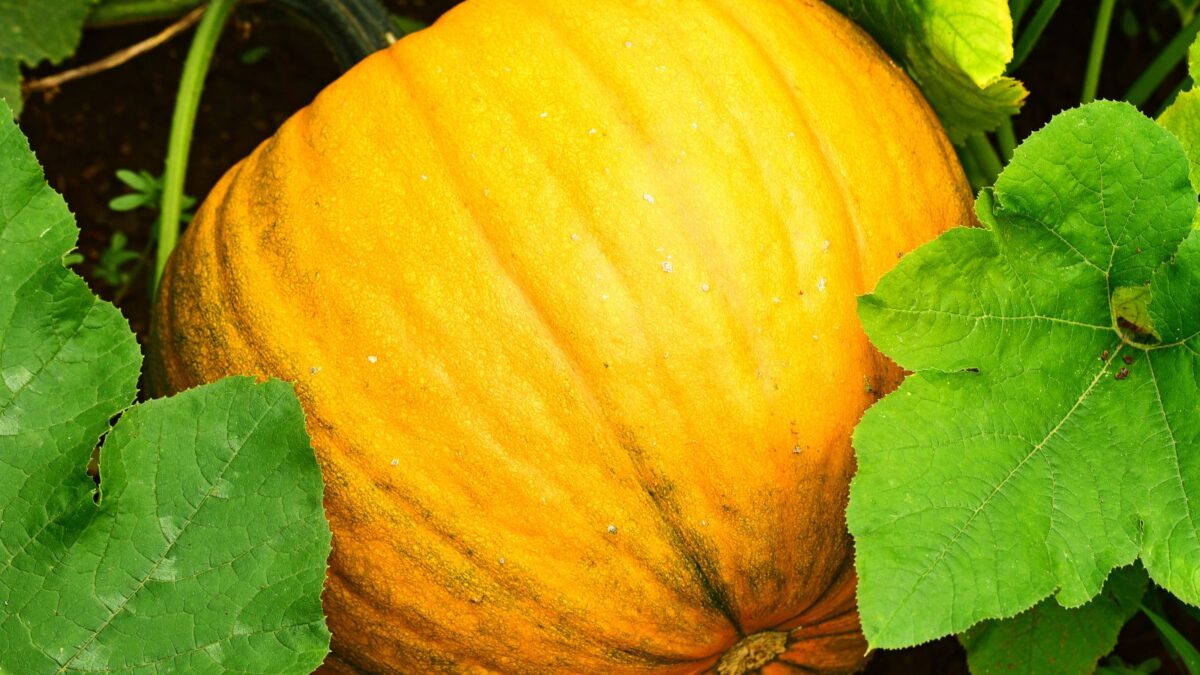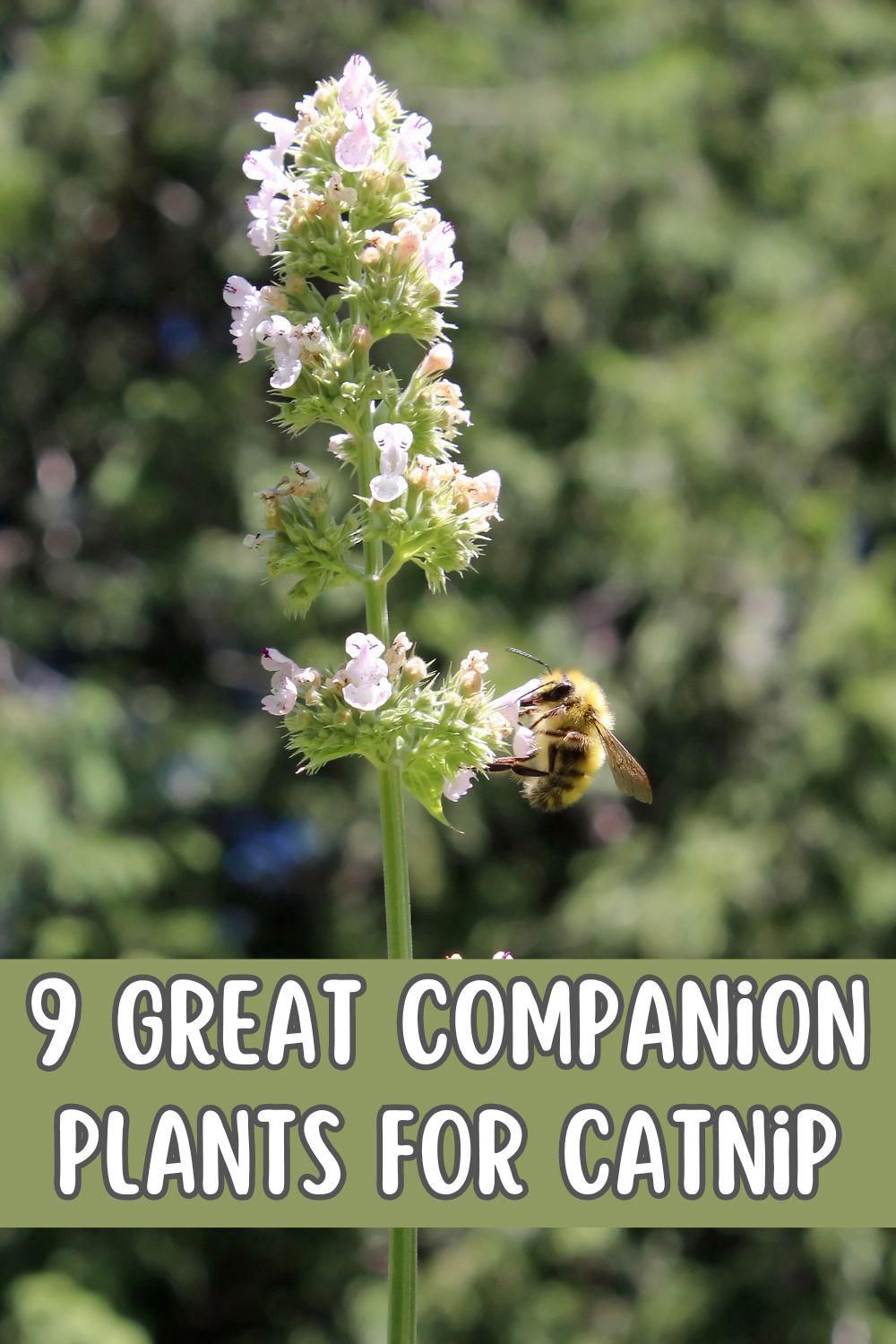Widely known for its attractiveness to cats, catnip also attracts beneficial insects while repelling many pests. This makes it an excellent companion plant in the garden! When choosing companion plants for catnip, consider what problems you may have had in the past and how catnip can help solve them.

Catnip contains an oil called nepetalactone that acts as a natural insect repellent. The following pests find it especially repulsive:
- aphids
- cabbage loopers
- potato beetles
- flea beetles
- Japanese beetles
- squash bugs
- weevils
Rodents like mice and voles also seem to dislike catnip. Plus, the cats it attracts like to hunt these small mammals. Catnip flowers also attract pollinators and predatory insects like parasitic wasps and lacewings, which feed on insect pests.
Another thing to keep in mind is that, like mint, catnip has a tendency to take over. It may be best planted in a raised bed or other contained area where it is less likely to spread out of control. Alternatively, you can plant catnip in a container and place it near the desired companion plants rather than growing it directly in the ground. This way, you get the beneficial properties of catnip without its aggressive sprawling. Win-win!
Finally, remember that catnip attracts cats. Some people plant it specifically for their cats, but you definitely don’t want all of the neighborhood felines using your vegetable garden as a giant litterbox! If you have a lot of cats nearby and don’t want them in your garden, this might be an herb to skip (learn more about keeping cats from using your garden as their toilet). Some people have also successfully planted a patch of catmint in a far corner of their property to lure cats away from the garden.
Catnip or catmint?

The herb that drives cats crazy is catnip (Nepeta cataria), which has white flowers with faint purple spots. Its cousin, catmint (N. mussinii), has showier, purple flowers and a bushier habit, but it lacks the cat-pleasing compound. We’re talking about catnip here, but much of the information also relates to catmint since both belong to the same genus.
1. Beets

Aphids are among some of the most common beet pests. Since catnip repels aphids, placing a pot of catnip near your beet patch can help reduce aphid damage.
Check out these 12 delicious ways to enjoy beets.
2. Broccoli

Catnip will help deter cabbage loopers and other pests that turn broccoli leaves skeletal and burrow into the tightly packed crowns.
3. Cauliflower

Like its cousin broccoli, cauliflower can benefit from the pest-repelling qualities of catnip. Grow them in neighboring raised beds or put a container of catnip near your cauliflower.
4. Collard greens

Another member of the brassica family, collard greens also suffer from cabbage loopers. Happily, catnip repels them! Just remember to keep different brassicas separate to prevent the spread of shared pests and diseases.
5. Lavender

Lavender not only shares growing requirements with catmint but also deters pests and attracts pollinators and other beneficial insects. Grow these two companion plant powerhouses together to amplify their benefits!
Learn about growing lavender for fun and profit: it’s so easy!
6. Potatoes

Are your potatoes plagued by Colorado potato beetles? Try setting a pot (or more!) of catmint nearby to help discourage these damaging insects from munching on your potato plants.
Tips for growing the best potatoes ever.
7. Pumpkin

Squash bugs multiply rapidly and can significantly damage pumpkin vines, reducing your harvest. Plant pumpkins near catmint (or vice-versa) to help keep the population down.
8. Rosemary

Like lavender, rosemary also complements the beneficial qualities of catnip and shares growing preferences. Its strong scent deters pests, and its flowers attract beneficial insects.
Here are 10 ways to use rosemary flowers.
9. Squash

Zucchini, other summer squash, and winter squash all benefit from catnip’s insect-repelling trait, much as pumpkins do.
Bad Companion Plants for Catnip

The biggest thing to remember about companion planting with catnip is that it spreads aggressively and will likely outcompete other plants for space and other resources. But as long as catnip is grown in a container, it gets along well with and often benefits most other plants. Catnip prefers full sun, so avoid placing it next to tall plants that may cast significant shade on it. However, it will tolerate a bit of light shade.
The one plant that definitely shouldn’t be planted with catnip is fennel. Unfortunately, fennel produces a compound that inhibits the growth of most other plants, so it should be planted in its own dedicated space away from other vegetables and herbs.
If you don’t already have catnip growing in your garden, you may want to place a few pots around the garden to help control insect pests. Give it a try!



